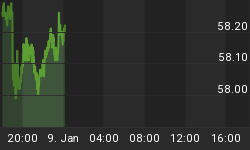Iconic jeans maker, Levi Strauss (Pending: LEVI), is planning a return to public life after three and a half decades as a private entity. The company has filed for an initial public offering and will list on the New York Stock Exchange under the ticker symbol “LEVI” in what promises to be one of the most high-profile IPOs of the year.
Levi has already enlisted 12 banks to underwrite the deal but says the number of shares to be offered and the share price is yet to be determined. In November, CNBC had reported that the company plans to debut with a valuation upwards of $5 billion. That seems about right given that the company generated revenue of $5.575B in FY 2018 (ended Nov. 25), a healthy 13.8 percent improvement as well as net income of $283M. The retail apparel industry has an average price-to-sales (TTM) ratio of 2.1 and a PE multiple of 48.
Levi Strauss, best known for its men’s jeans business, might, however, end up wearing a new face as a public company.
New strategy
Levi was founded in 1853 as a wholesale dry-goods business by Bavarian immigrant Levi Strauss during the famous California Gold Rush before getting into the blue jeans business two decades. The company weathered many storms before growing into one of the world’s biggest brands in denim. Levi’s first IPO was in 1971 before the family took it private again in 1984 in a $1.7B leveraged buyout amid slumping sales.
The denim industry has been facing headwinds in recent years as people buy more off-brand jeans, leggings, jogging or yoga pants. For instance, rival VF Corp., has outlined plans to spin off its Wrangler and Lee denim brands into independent companies so as to focus more on faster-growing athleisure and outdoor brands such as Timberland, North Face and Vans. Related: Medical Bankruptcy Is Killing The American Middle Class
Levi has not planned any dramatic spinoffs like VF Corp. In fact, the company plans to take the opposite route by using proceeds of the IPO to make strategic acquisitions that will help expand its portfolio of newer and faster-growing brands. The company says it will seek fresh growth runways by expanding auxiliary segments, including into shirts, trucker jackets and fleece sweatshirts and women clothing and also expand its ”Other” category that includes footwear and outerwear. These non-core categories are growing at a fast clip and netted six percent of total revenue in 2018.
Further, the company plans to double-down on its value-oriented collections including Dockers and Denizen brands. These brands are some of the company’s fastest-growing and brought in 28 percent of overall revenue in 2018 up from 21 percent in the previous year. But perhaps more importantly, Levi has significantly increased its marketing spend in a bid to regain its fading brand recognition and connect more with the younger generation of shoppers that no longer regard the brand as “cool”.
Focusing on emerging markets
But it’s not just denim companies that have been struggling. Victoria’s Secrets, American Eagle Outfitters, GAP Inc., have seen sales in the giant North American market flatten or decline in recent years. An interesting study by Instinet found that wholesalers like Levi Strauss tend to ‘cap out’ at $5 billion in North American while direct-to-consumer (DTC) retailers like Victoria’s Secrets and GAP hit a peak around $3 billion.
We as yet don’t know much about Levi’s revenue distribution by geography. But going by its nearly $6B sales figure, it’s fair to assume that it’s not very far from hitting a ceiling in the North American market. It, therefore, makes plenty of sense to focus more on emerging markets. Levi Strauss plans to double down on China, Brazil and India where it has a minimal presence. The company has noted that China alone represents 20 percent of the global apparel market yet makes up just three percent of the company’s net revenues. Nearly half of the company’s top line comes from Europe and Asia.
The latest available set of results by Levi Strauss proves that it’s doing something right. Revenue growth of nearly 14 percent is nothing to sniff at in the apparel industry, implying that a sharper focus on value-oriented and luxury brands is working. Investors can only hope that Levi Strauss IPO 2.0 turns out much better than IPO 1.0.
By Alex Kimani for Safehaven.com

















